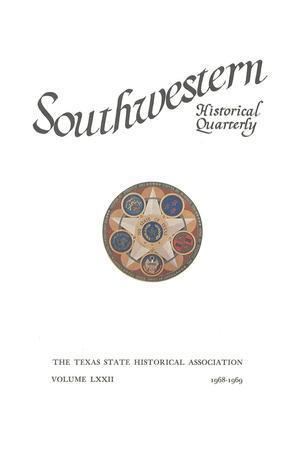Headquarters Texas, United States | ||
 | ||
Similar West Texas Historical Association, Southwestern University, Stephen F Austin State Uni, Grand Army of the Republic, Daughters of the American | ||
The Texas State Historical Association (TSHA) is a non-profit educational organization, dedicated to documenting the history of Texas. It was founded on March 2, 1897.
Contents
- Overview
- History
- Notable members
- Selected TSHA fellows
- Publications
- Educational programs
- Handbook of Texas
- References
As of November 2008, TSHA moved their offices from Austin to the University of North Texas in Denton. In 2015, the offices were relocated, once again, to Austin.
Overview
The chief executive officer is Brian Bolinger. The association president (2011-2012) is Merline Pitre; the preceding president is Dianne Garrett Powell (2010–2011). Other past presidents are the late Robert A. Calvert (1989–1990) of Texas A&M, Alwyn Barr (1992-1993) of Texas Tech University, and Jerry D. Thompson (2001–2002) of Texas A&M International University in Laredo.
History
The first ideas to create TSHA took place at a meeting of ten people at the University of Texas at Austin campus, who wanted to create an organization which would "promote the discovery, collection, preservation, and publication of historical material relating to Texas." This led to another meeting in Austin on March 2, 1897, where 250 individuals were invited to help create the organization. Of the 250, "between twenty and thirty" were present at the meeting, with others who could not attend responding with approval. This first formal meeting of TSHA included men and several women who became charter members.
At this first meeting, George P. Garrison, forwarded the idea that archival material about Texas needed to be preserved. Officers were chosen during the meeting and a controversy over what John Salmon Ford called "lady members," caused Ford to storm out of the meeting. Ford wanted the original constitution for TSHA to amend "members" with "lady members" when the participants were women. Garrison did not want to change the constitution, and eventually Bride Neill Taylor spoke up and agreed that there was no need to change anything. Ford could not be placated and after yelling at Taylor, saying, "Madam, your brass may get you into the association, but you will never have the right to get in under that section as it stands," his amendment to create "lady members" was unanimously defeated by the others at the meeting. Ford's leaving the meeting was seen as a negative effect to the other charter members who were counting on his political influence to support the group at the political level.
The first president was Oran M. Roberts, with Dudley G. Wooten, Julia Lee Sinks, Guy M. Bryan and Charles Corner elected as vice presidents. Dues for membership were $2 a year in 1897.
TSHA began to hold annual meetings in Austin. The first annual meeting was held on June 17, 1897. Topics included "The Expulsion of the Cherokees From East Texas, "The Last Survivor of the Goliad Massacre," "The Veramendt House," "Thomson's Clandestine Passage Around Nacogdoches," and "Defunct Counties of Texas." There was also a group business meeting.
By 1928, TSHA had a membership around 500 individuals.
Notable members
Selected TSHA fellows
Publications
The organization produces three educational publications, in addition to the New Handbook of Texas:
Educational programs
Handbook of Texas
The organization publishes the New Handbook of Texas which is a six-volume multidisciplinary encyclopedia of Texas history, culture, and geography.
In addition, the Handbook of Texas Online is provided by TSHA for internet historical research of Texas.
